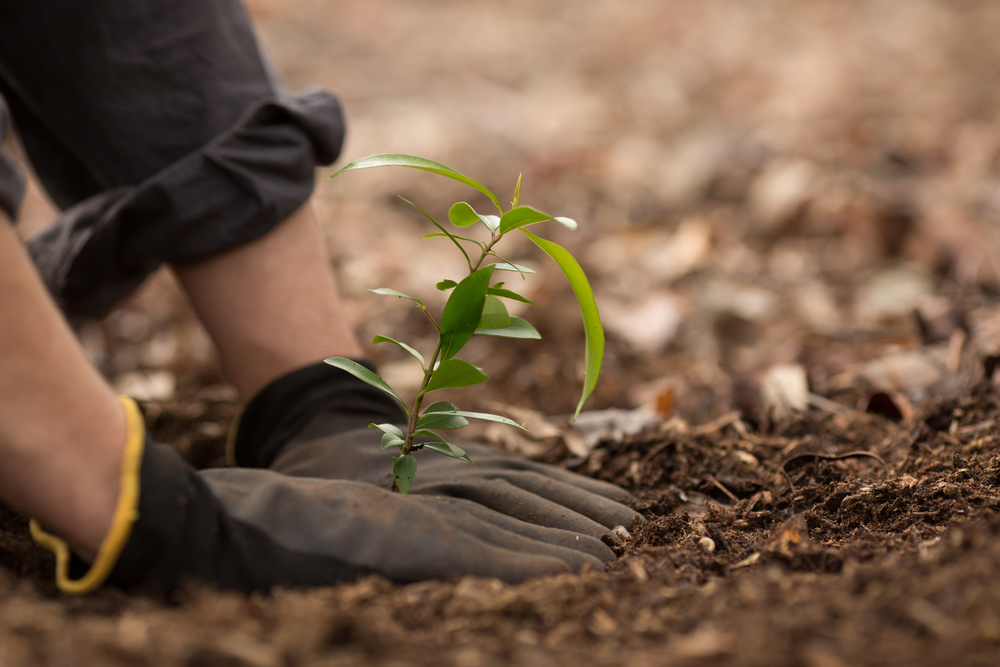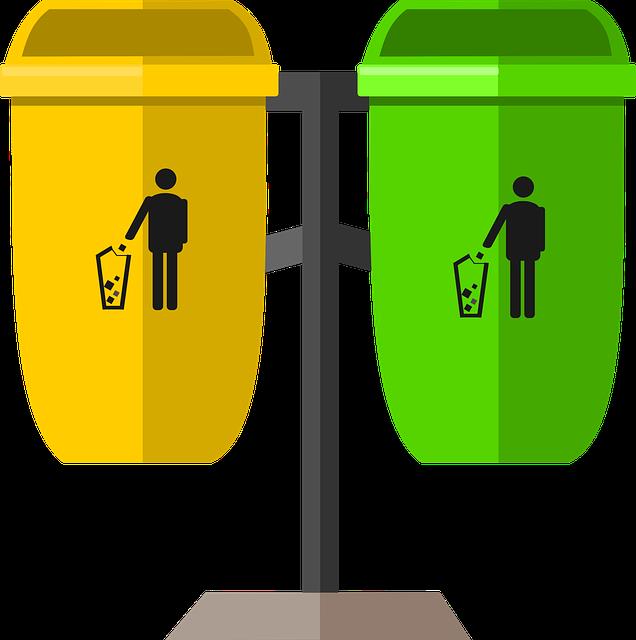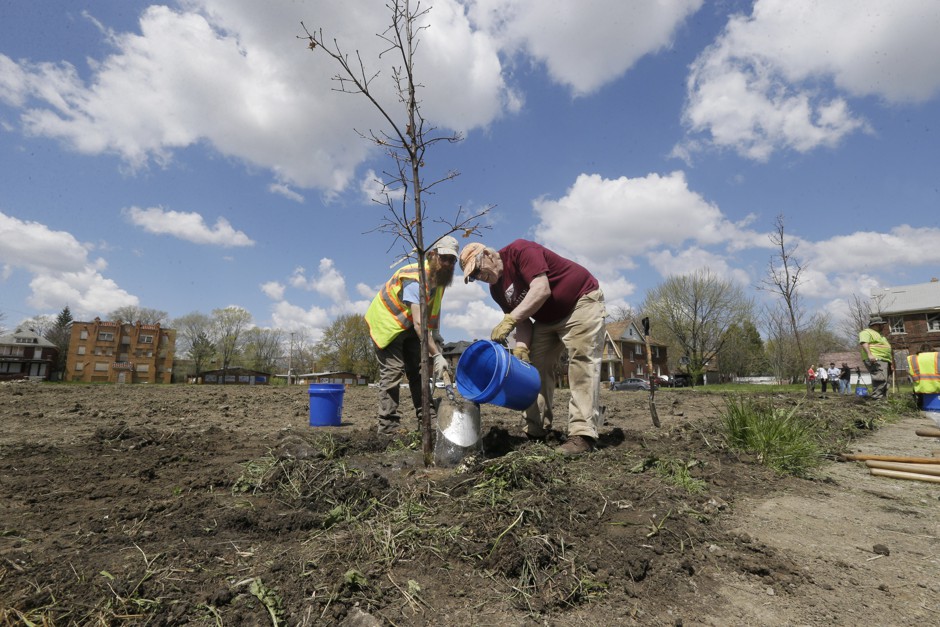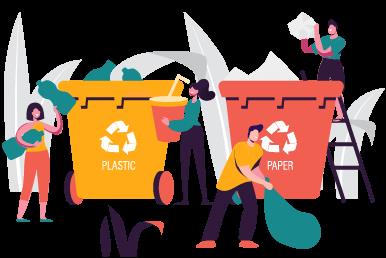
In the face of escalating climate change, it is imperative for individuals to take proactive measures to combat its effects.
This article presents a comprehensive list of the top 10 personal measures to tackle climate change, focusing on the importance of energy efficiency and exploring various other sustainable practices.
By adopting these measures, individuals can play a crucial role in mitigating the adverse impacts of climate change and promoting a greener and more sustainable future for all.
Energy Efficiency
Energy efficiency is a crucial factor in mitigating climate change. It allows individuals to reduce their energy consumption and carbon footprint. By implementing energy-efficient practices and technologies, individuals can optimize energy usage while minimizing waste and emissions.
One of the key aspects of energy efficiency is the adoption of renewable energy sources. Renewable energy, such as solar and wind power, offers sustainable alternatives to fossil fuels and can significantly reduce greenhouse gas emissions.
Additionally, energy-efficient appliances and buildings play a vital role in reducing energy consumption. These include energy-saving light bulbs, smart thermostats, and well-insulated homes.
Water Conservation
Water conservation plays a crucial role in addressing climate change and ensuring the sustainable use of this vital resource.

By adopting efficient irrigation methods, such as drip irrigation or using sprinklers with smart controllers, we can minimize water wastage in agriculture.
Additionally, implementing rainwater harvesting techniques, such as collecting rainwater in barrels or installing rain gardens, can help reduce reliance on traditional water sources and promote water conservation at a personal level.
Efficient Irrigation Methods
One key aspect in addressing climate change is through the implementation of efficient irrigation methods, which promote water conservation and sustainability. By adopting techniques such as drip irrigation and smart watering, individuals can significantly reduce water usage in their gardens and landscapes.
Here are three effective methods for efficient irrigation:
- Drip Irrigation: This method involves delivering water directly to the plant's roots through a system of tubes and emitters. It minimizes water loss due to evaporation and ensures that plants receive the precise amount of water they need.
- Smart Watering Systems: These systems use sensors and weather data to determine the optimal time and amount of water required for irrigation. By adjusting watering schedules based on real-time conditions, they prevent overwatering and promote water efficiency.
- Mulching: Applying a layer of organic mulch around plants helps retain soil moisture by reducing evaporation. It also suppresses weed growth, reducing competition for water resources.
Rainwater Harvesting Techniques
Rainwater harvesting techniques offer a practical and sustainable solution for conserving water resources in a frequency-dependent manner. By collecting and storing rainwater, individuals and communities can reduce their reliance on traditional water sources and contribute to water conservation efforts.
The benefits of rainwater harvesting are numerous. Firstly, it helps to alleviate pressure on freshwater sources, especially in regions prone to drought or water scarcity. Additionally, rainwater harvesting can reduce stormwater runoff, which can contribute to flooding and erosion.
Implementing rainwater harvesting systems can be done at various scales, from individual households to large-scale commercial buildings. Techniques such as rooftop rainwater harvesting, rain barrels, and underground storage tanks can be employed depending on the specific needs and limitations of the location.

Sustainable Traveling
To minimize their carbon footprint, individuals can adopt sustainable traveling practices such as using public transportation or carpooling. Sustainable traveling not only reduces greenhouse gas emissions but also promotes eco-friendly transportation options and supports the growth of eco-tourism.
Here are three ways individuals can incorporate sustainable traveling into their lifestyle:
- Utilize public transportation: Opting for buses, trains, or trams instead of personal vehicles can significantly reduce carbon emissions. Public transportation systems are designed to accommodate a large number of passengers, resulting in a more efficient use of energy and resources.
- Carpooling or ridesharing: Sharing rides with others going in the same direction reduces the number of vehicles on the road, leading to lower emissions and decreased traffic congestion. Carpooling apps and websites make it easier than ever to find fellow travelers to share a ride with.
- Choose eco-friendly accommodations: When traveling, consider staying in eco-friendly accommodations that prioritize sustainability and minimize their environmental impact. Look for hotels or guesthouses that have implemented energy-saving measures, waste reduction strategies, and support local communities.
Waste Reduction
Implementing effective waste reduction strategies is crucial in tackling climate change and reducing our environmental impact. Proper waste management and recycling initiatives can significantly contribute to this effort. By implementing waste reduction strategies, we can minimize the amount of waste that ends up in landfills, reducing greenhouse gas emissions and conserving natural resources.
One important waste reduction strategy is recycling. Recycling initiatives, such as separating recyclables from general waste and ensuring their proper disposal, can help divert materials from landfills and conserve energy and resources. This process involves collecting, sorting, and processing recyclable materials to produce new products. It not only reduces the need for raw materials but also saves energy and reduces pollution.
Another effective waste reduction strategy is waste management. This involves implementing practices such as waste segregation, composting, and waste-to-energy technologies. Segregating waste at the source and diverting organic waste for composting can significantly reduce the amount of waste sent to landfills. Additionally, waste-to-energy technologies can convert non-recyclable waste into energy, reducing the need for fossil fuel-based energy sources.
Organic Food Consumption
One significant measure to tackle climate change is incorporating organic food consumption into our daily lives. Organic farming benefits the environment in several ways, making it an important component of sustainable agriculture practices. Here are three reasons why consuming organic food can contribute to mitigating climate change:
- Reduced greenhouse gas emissions: Organic farming practices minimize the use of synthetic fertilizers and pesticides, which are energy-intensive to produce and contribute to greenhouse gas emissions. By choosing organic food, we support a farming system that emits fewer greenhouse gases and helps combat climate change.
- Soil conservation: Organic farming focuses on building healthy, fertile soil through natural methods such as composting and crop rotation. This promotes soil health and biodiversity, enhancing its ability to sequester carbon and reduce soil erosion, helping to preserve our natural resources.
- Water conservation: Organic farming relies on sustainable water management practices, such as drip irrigation and water-efficient techniques. By reducing water usage, organic farming helps conserve this precious resource and reduces the energy required for irrigation, thus minimizing the carbon footprint associated with water consumption.
Incorporating organic food into our diets not only supports our health but also contributes to a more sustainable and climate-friendly food system.

Renewable Energy Use
The utilization of renewable energy is a crucial step in addressing climate change and promoting a sustainable future. To accelerate the adoption of renewable energy, governments around the world have implemented various renewable energy policies.
These policies include financial incentives, feed-in tariffs, and renewable portfolio standards, which aim to encourage the use of renewable energy sources such as solar, wind, and hydroelectric power.
One effective way individuals can contribute to the use of renewable energy is through solar panel installation. Solar panels convert sunlight into electricity, reducing reliance on fossil fuels and decreasing greenhouse gas emissions. Installing solar panels on rooftops not only allows individuals to generate their own clean energy but also contributes to the overall transition to a renewable energy-based society.
Green Space Creation
To further enhance our efforts in combating climate change and creating a sustainable future, individuals can actively contribute by incorporating green space creation into their personal measures. Green spaces, such as parks, gardens, and urban forests, play a crucial role in mitigating climate change and improving the overall well-being of communities.
Here are three ways individuals can contribute to green space creation:
- Green Space Preservation: By advocating for the protection and conservation of existing green spaces, individuals can ensure that these areas are not lost to urban development. This can be done by joining local conservation organizations or supporting initiatives that promote green space preservation.
- Urban Gardening: Utilizing available spaces, such as rooftops, balconies, or community gardens, for urban gardening can significantly contribute to green space creation. Growing vegetables, fruits, and herbs locally reduces the carbon footprint associated with transportation and promotes sustainable food production.
- Tree Planting: Planting trees in urban areas not only enhances the aesthetic appeal but also helps combat climate change by absorbing carbon dioxide and releasing oxygen. Individuals can participate in tree planting initiatives organized by local authorities or volunteer with organizations focused on urban reforestation.
Local Product Purchasing
Local product purchasing plays a crucial role in addressing climate change by supporting the local economy, reducing carbon footprints, and promoting sustainable practices.
By choosing products that are produced locally, consumers can minimize the environmental impact associated with transportation and support local businesses, contributing to the overall resilience of the community.

Additionally, purchasing locally often means supporting sustainable farming and manufacturing practices, which can further reduce greenhouse gas emissions and promote a more sustainable future.
Supporting Local Economy
By prioritizing the purchase of products from our immediate community, individuals can contribute to the growth and sustainability of their local economy while also reducing their carbon footprint. Supporting local businesses not only strengthens the local economy but also fosters community engagement and promotes self-sufficiency.
Here are three reasons why supporting local economy through local product purchasing is essential:
- Reduced Carbon Emissions: Buying locally manufactured products eliminates the need for long-distance transportation, reducing carbon emissions associated with transportation and packaging.
- Job Creation: By supporting local businesses, individuals create job opportunities within their community, leading to economic growth and reduced unemployment rates.
- Unique and High-Quality Products: Local businesses often offer unique, handcrafted, and high-quality products that cannot be found in large chain stores. By purchasing these products, individuals contribute to the preservation of local traditions and craftsmanship.
Supporting the local economy through local product purchasing is a tangible way for individuals to make a positive impact and contribute to the overall sustainability and prosperity of their community.
Supporting the local economy through the purchase of locally manufactured products is a crucial step in reducing one's carbon footprint and promoting sustainability. By choosing products that are made closer to home, consumers can significantly reduce the carbon emissions associated with long-distance transportation. This approach not only decreases reliance on fossil fuels but also supports local businesses and contributes to the growth of the community.
In addition to reducing carbon emissions, purchasing locally made products can also help in spreading climate change awareness. Local businesses often prioritize sustainable practices and are more likely to invest in eco-friendly technologies. By supporting these businesses, individuals can indirectly promote sustainable practices and encourage others to follow suit.
To further reduce the carbon footprint, individuals can also consider carbon offsetting. This involves investing in projects that help to reduce greenhouse gas emissions, such as reforestation or renewable energy initiatives. By offsetting the carbon emissions associated with their purchases, individuals can take a proactive approach towards mitigating climate change.

To further reduce our carbon footprint and support sustainable practices, individuals can actively promote the purchase of locally manufactured products. By choosing products made in your local community, you can contribute to the reduction of greenhouse gas emissions associated with long-distance transportation.
Here are three ways to promote sustainable practices through local product purchasing:
- Embrace sustainable fashion: Opt for clothing and accessories made from organic, recycled, or upcycled materials. Support local designers and brands that prioritize ethical and environmentally friendly manufacturing processes.
- Invest in eco-friendly technology: When purchasing electronic devices, choose products that are energy-efficient and have a minimal environmental impact. Look for certifications like Energy Star and EPEAT to ensure your gadgets are eco-friendly.
- Support local farmers and artisans: Buy locally grown produce and locally made goods to reduce the carbon emissions associated with long-distance transportation. By supporting local businesses, you contribute to the growth of your community and encourage a sustainable economy.
Carbon Offsetting
While it may not be a solution to the root causes of climate change, carbon offsetting provides individuals with an opportunity to mitigate their carbon emissions. Carbon offsetting involves investing in projects that reduce greenhouse gas emissions, such as renewable energy projects or reforestation initiatives. By purchasing carbon offsets, individuals can essentially 'neutralize' their own carbon footprint by supporting activities that remove or reduce greenhouse gases from the atmosphere.
One way to engage in carbon offsetting is through sustainable investing. This approach involves directing investments towards companies or projects that prioritize environmental sustainability and work towards reducing carbon emissions. By investing in these entities, individuals can support the development and expansion of low-carbon technologies and practices, thus contributing to the overall reduction of carbon emissions.
While carbon offsetting alone is not enough to combat climate change, it can be a valuable tool in the fight against global warming. It allows individuals to take immediate action to reduce their carbon footprint and support sustainable practices. However, it is important to note that carbon offsetting should be combined with other measures such as energy efficiency and renewable energy adoption to achieve meaningful and lasting change.
Climate Change Awareness Spreading
Climate change awareness spreading is crucial in addressing the challenges of global warming. By disseminating global warming facts, individuals can better understand the environmental impact of their actions and make informed choices.
Public education campaigns play a vital role in raising awareness and empowering people to take action towards mitigating climate change.

Global Warming Facts
The spreading of climate change awareness has led to a greater understanding of global warming facts. As more people become aware of the impact of human activities on the planet, it is crucial to highlight the effects of global warming and the solutions available.
Here are three key facts about global warming:
- Rising temperatures: Global warming is primarily characterized by an increase in average temperatures worldwide. This leads to a range of consequences such as melting glaciers, rising sea levels, and extreme weather events.
- Biodiversity loss: Climate change poses a significant threat to Earth's biodiversity. Rising temperatures disrupt ecosystems, causing habitat loss and species extinction. Conserving and restoring ecosystems is essential in mitigating this loss.
- Mitigation and adaptation: Tackling global warming requires both mitigation efforts to reduce greenhouse gas emissions and adaptation strategies to cope with the changes already occurring. These include transitioning to renewable energy sources, implementing sustainable land use practices, and investing in climate resilience.
Environmental Impact Awareness
Environmental impact awareness is crucial in the fight against climate change. It plays a vital role in empowering individuals to take action and make informed choices that can contribute to a sustainable future. One of the key ways to promote environmental impact awareness is through environmental education. By providing people with the knowledge and understanding of the impacts of their actions on the environment, we can encourage them to adopt more sustainable practices.
Community engagement is another important aspect of spreading climate change awareness. By involving communities in discussions and decision-making processes, we can foster a sense of ownership and responsibility for protecting the environment. This can lead to the development of collaborative solutions and the implementation of effective strategies to mitigate climate change.
Public Education Campaigns
Promoting climate change awareness through public education campaigns is essential for empowering individuals and communities to take action towards a sustainable future. By spreading knowledge and understanding about the impact of climate change, these campaigns can encourage individuals to make informed choices and adopt behaviors that reduce their carbon footprint.
Here are three ways public education campaigns can contribute to addressing climate change:
- Encouraging the use of public transportation: Public education campaigns can highlight the environmental benefits of using public transportation instead of private vehicles. By promoting the advantages of public transportation, such as reduced greenhouse gas emissions and less traffic congestion, individuals can be motivated to shift towards more sustainable modes of transportation.
- Promoting renewable energy sources: Public education campaigns can raise awareness about the importance of transitioning to renewable energy sources, such as solar and wind power. By educating individuals about the benefits of renewable energy, including reduced reliance on fossil fuels and decreased carbon emissions, these campaigns can encourage the adoption of clean energy technologies.
- Fostering behavioral changes: Public education campaigns can provide individuals with the knowledge and tools to make sustainable choices in their everyday lives. By promoting energy-saving practices, sustainable consumption, and waste reduction, these campaigns can empower individuals to take actions that mitigate climate change.
Through effective public education campaigns, individuals can be equipped with the necessary information and motivation to contribute towards a more sustainable future.

Frequently Asked Questions
What Are Some Practical Tips for Reducing Energy Consumption at Home?
Reducing energy consumption at home can be achieved through various practical tips. One effective approach is to invest in energy-efficient appliances and incorporate smart home technology, which can optimize energy usage and contribute to overall energy savings.
How Can Individuals Contribute to Water Conservation Efforts?
Individuals can contribute to water conservation efforts by implementing water saving techniques such as installing low-flow fixtures, using efficient irrigation systems, and practicing rainwater harvesting. These measures help reduce water waste and promote sustainable water management.
What Are Some Sustainable Transportation Options for Reducing Carbon Emissions?
Eco-friendly commuting is crucial for reducing carbon emissions. Public transportation alternatives, such as buses, trains, and trams, offer sustainable options for individuals to travel. These options help alleviate traffic congestion and promote a cleaner environment.
Reducing food waste and promoting recycling are crucial steps individuals can take to address climate change. By implementing strategies such as composting at home, individuals can reduce their environmental footprint and contribute to a more sustainable future.
What Are the Benefits of Consuming Organic Food and How Does It Contribute to Tackling Climate Change?
Consuming organic food has numerous benefits, both for individuals and the environment. Organic farming practices promote sustainable agriculture, which reduces greenhouse gas emissions, conserves water, and protects biodiversity, contributing to tackling climate change.
 Business & FinanceHealth & MedicineTechnologyLifestyle & CultureScience & EnvironmentWorld NewsPrivacy PolicyTerms And Conditions
Business & FinanceHealth & MedicineTechnologyLifestyle & CultureScience & EnvironmentWorld NewsPrivacy PolicyTerms And Conditions
